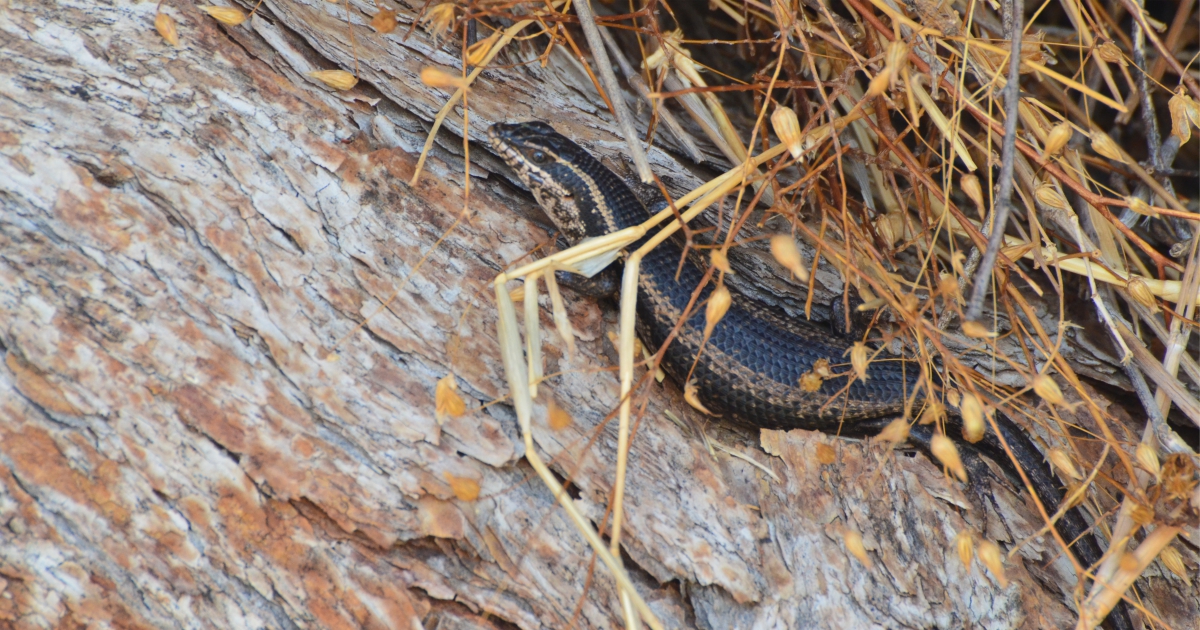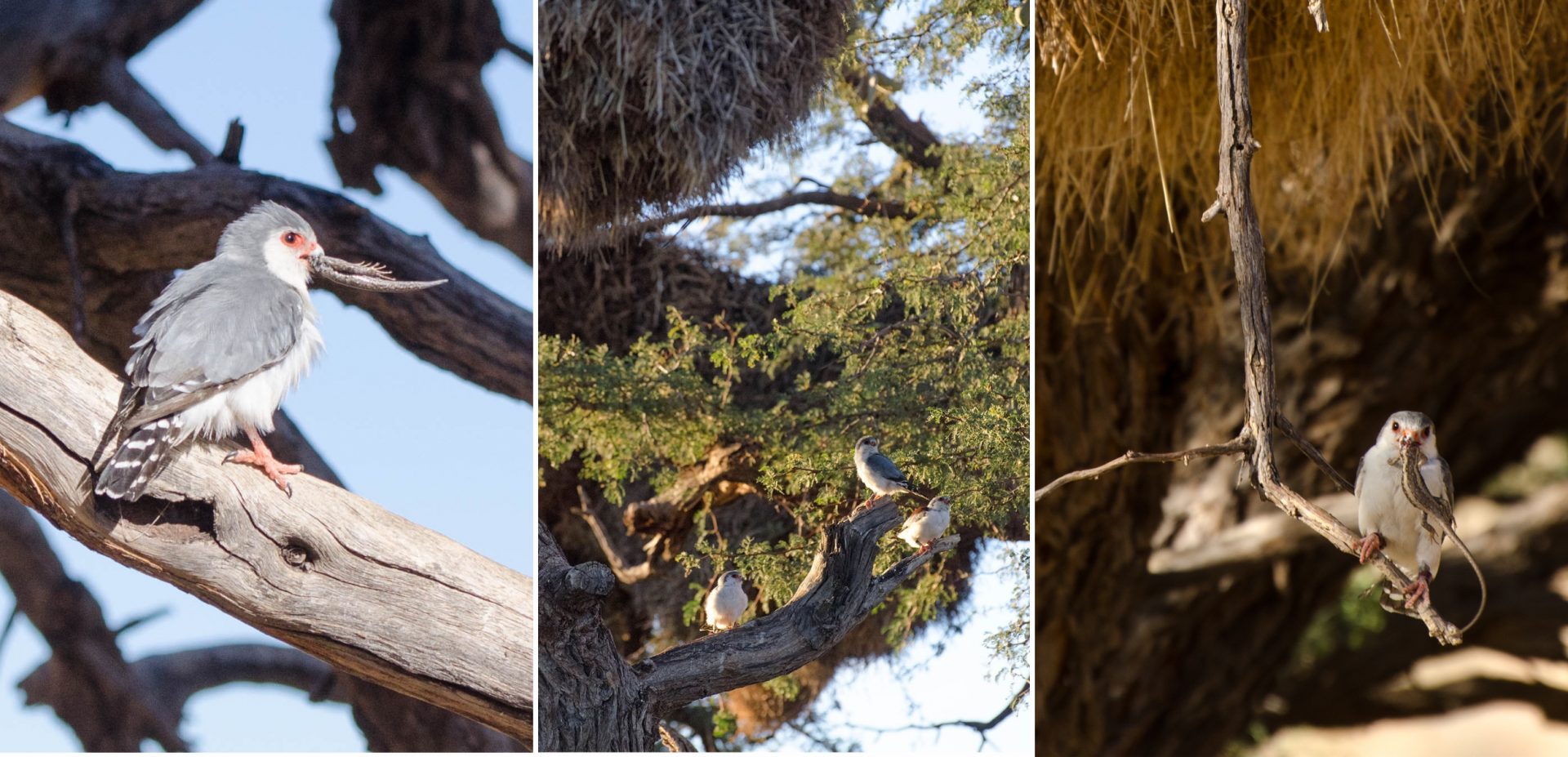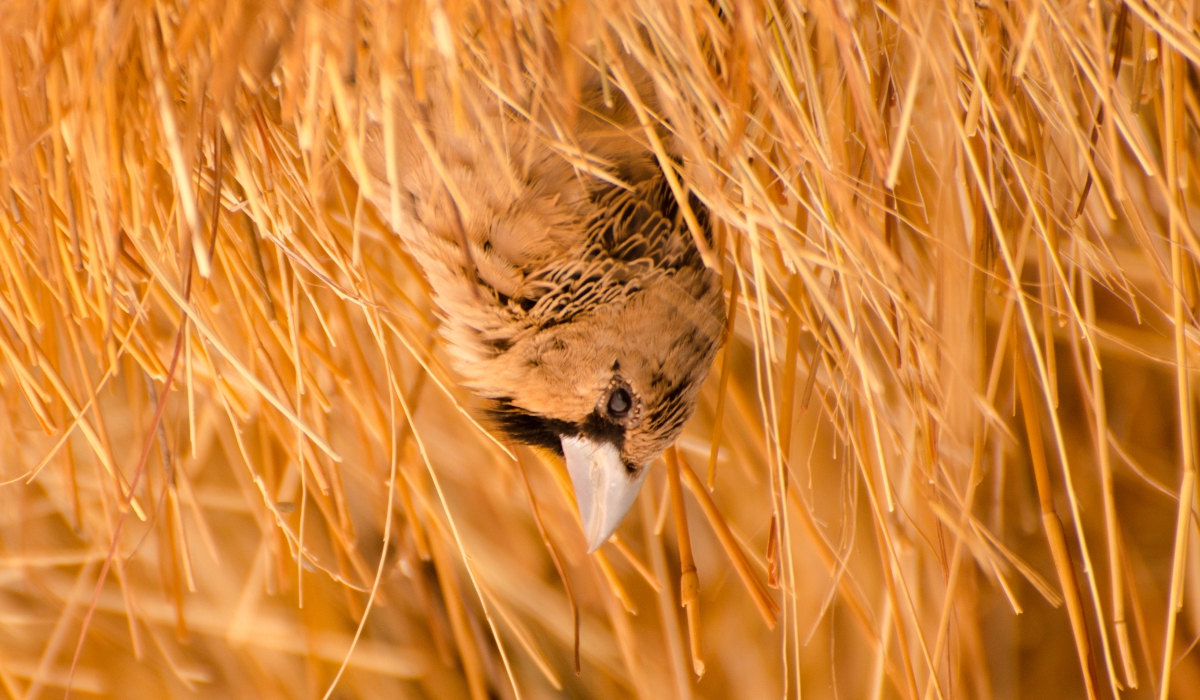CLEVER KALAHARI TREE SKINKS
While on safari at Tswalu you’re likely to come across the Kalahari tree skink (Trachylepis spilogaster). As its name suggests, it is a tree-dwelling lizard commonly found on a camel thorn or shepherd’s tree – species that are typical of the Kalahari. Research has found that tree skinks are especially common if the tree contains a sociable weaver colony. These massive nesting structures provide refuges and basking sites for the skinks, and also attract insects for them to feed on. Skinks will venture cautiously away from the tree to forage on the ground, but if disturbed they return quickly to the safety of the tree’s cavity or a fallen branch.

Throughout southern Africa, pygmy falcons also rely on sociable weaver colonies for breeding and roosting. The falcon’s dependence on these colonies is clear: where there are no weaver colonies there are no pygmy falcons. These tiny birds of prey feed largely on insects and small reptiles, including Kalahari tree skinks. Interestingly, these skinks do not seem to avoid colonies that are occupied by pygmy falcons. This begs the question: how are Kalahari tree skinks able to live in such close proximity to one of their key predators?

Pygmy falcons are also known to prey on sociable weavers, which causes the weavers to alarm call continuously when falcons approach the colony. While the warning calls they make are for the benefit of other sociable weavers, as the old adage advises, ‘The enemy of my enemy is my friend’. Kalahari tree skinks appear to use sociable weavers to indicate when danger is nearby. When a falcon approaches, the weavers raise the alarm and flee for cover. The skinks then follow suit. By using the weaver alarms as a warning, the skinks effectively are given a head start, which increases their likelihood of escaping to safety. When the weavers are away from their colonies foraging, however, the skinks take a more cautious approach and stay closer to cover, which is a safer strategy in the absence of their ‘early warning system’.
The tree skinks have learnt to understand that the weaver alarm calls mean ‘Falcon! Falcon! Falcon!’ Skinks living in colony trees in close association with weavers are more likely to respond appropriately to the weaver alarm calls than skinks at non-colony trees. In fact, when skinks at colony trees hear the normal, relaxed social chatter of weavers, they forage and bask normally because the chatter indicates the absence of a threat. However, when they hear the alarm call of the weavers, their behaviour changes dramatically. They lift and turn their heads, scanning for potential approaching danger, before fleeing for cover. In contrast, skinks at trees without colonies scan more often and are more likely to flee when they hear the normal chatter of sociable weavers, suggesting that they are unfamiliar with their different calls.

Skinks are therefore able to benefit from the weavers by eavesdropping on their calls. Being warned by potentially hundreds of vigilant weavers is a useful risk-management strategy for skinks. This ‘danger’ information facilitates the coexistence of skinks with pygmy falcons at sociable weaver colonies, helping them to avoid lethal encounters. The research done on Tswalu Kalahari highlights the potential importance of eavesdropping in determining the outcomes of interactions between species that use sociable weaver nests.
Images taken by Anthony Lowney

